Reply To:
Name - Reply Comment
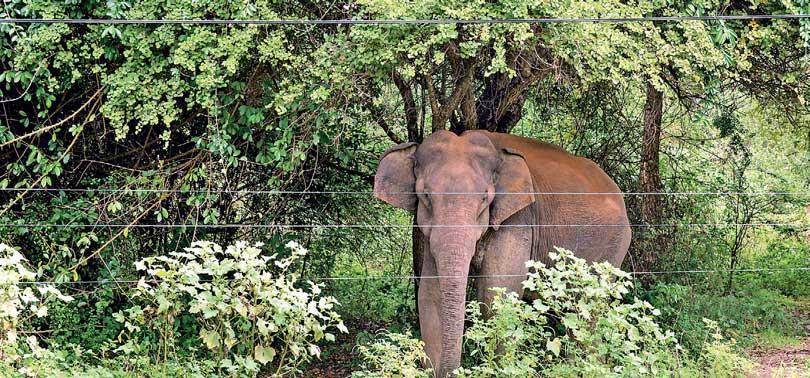 The highest number of human and elephant deaths has been recorded from the North Western Province (AFP)
The highest number of human and elephant deaths has been recorded from the North Western Province (AFP)
 The dry zone is home to a majority of the estimated elephant population of Sri Lanka. This population is scattered in small pockets of habitats as small herds and individual elephants. Efforts to mitigate the human-elephant conflict by conservationists haven’t proven the desired outcomes since most elephant habitats and elephant corridors (also called elephant passes) have been destructed. On the other hand, as many as 16 areas that have been identified as elephant passes are yet to be declared and included in a gazette as authorities are finding it a challenge to convince private investors and humans to move away from areas frequented by elephants.
The dry zone is home to a majority of the estimated elephant population of Sri Lanka. This population is scattered in small pockets of habitats as small herds and individual elephants. Efforts to mitigate the human-elephant conflict by conservationists haven’t proven the desired outcomes since most elephant habitats and elephant corridors (also called elephant passes) have been destructed. On the other hand, as many as 16 areas that have been identified as elephant passes are yet to be declared and included in a gazette as authorities are finding it a challenge to convince private investors and humans to move away from areas frequented by elephants.
The Dailymirror therefore takes a look at a few ongoing projects along elephant corridors and possible threats they could impose in the long-term.
Private mango plantations
Kala Wewa
The go-ahead was given to a private company to put up a mango plantation in the Kiralawa Reserve bordering Kala Wewa. While the land area had already been surveyed, environmentalists argue whether it is 25 acres or 100 acres of land that had been released. “The subject minister said that only 25 acres were released, but when we inquired from the company we were given the impression that they were allowed to grow mangoes in a 100 acre area of land,” said Environmental Conservation Trust Director Sajeewa Chamikara. “This is the main elephant corridor that elephants use to migrate from Kahalla-Pallekele sanctuary towards Kala Wewa; especially during the gathering. During the dry season elephants arrive at Kala Wewa to hydrate themselves. But when their main migratory route is blocked the human-elephant conflict will aggravate.” explained Chamikara.
He also questioned how the Mahaweli Authority could be releasing land when this area had been proposed to be gazetted as a National Park. “As part of the Wayamba Ela project, it has been proposed to reconstruct surrounding lakes and because a certain extent of the Kahalla-Pallekele sanctuary will be utilised for the development a plan was underway to gazette the area as a national park. This is an attempt to upgrade it as a protected area. But before all that happened, the Authority started giving away lands,” added Chamikara.

But when their main migratory route is blocked the human-elephant conflict will aggravate
-Sajeewa Chamikara
He further said that this project also violates the National Environment Act as no Environmental Impact Assessment had been done. “If more than 2.5 acres of land is going to be cleared an Environmental Impact Assessment has to be done,” he affirmed.
No elephant corridor destroyed
However, when the Daily Mirror contacted Mahaweli Authority Director General B.A Sunil Perera he said that the mentioned area is outside the reservation of the Authority. “The said land was released during the previous regime. Even though people say this area has an elephant corridor we haven’t included an area that has been gazetted or declared as an elephant corridor for this project.”
He further said that only 12-15 acres of land have been allocated for the project. “Some people say 25 acres have been released but that’s not true. If we are encroaching into a protected area then the Forest Department or the DWC would inform us. So far they haven’t spoken to us on any such matter,” he said.
Galgamuwa
Another incident was reported from Galgamuwa where 60 acres of land belonging to the Thorawa Mailawa Temple were leased out to a private company to put up a mango plantation. Area residents told the Daily Mirror that more land had been cleared during the curfew period. This temple land has also been cleared without a proper environmental evaluation. Some residents said that around 150 acres had been given away. However, this area too is identified as an elephant corridor as residents see elephants frequenting the area.
Several attempts to contact Thorawa Mailawa temple proved futile.
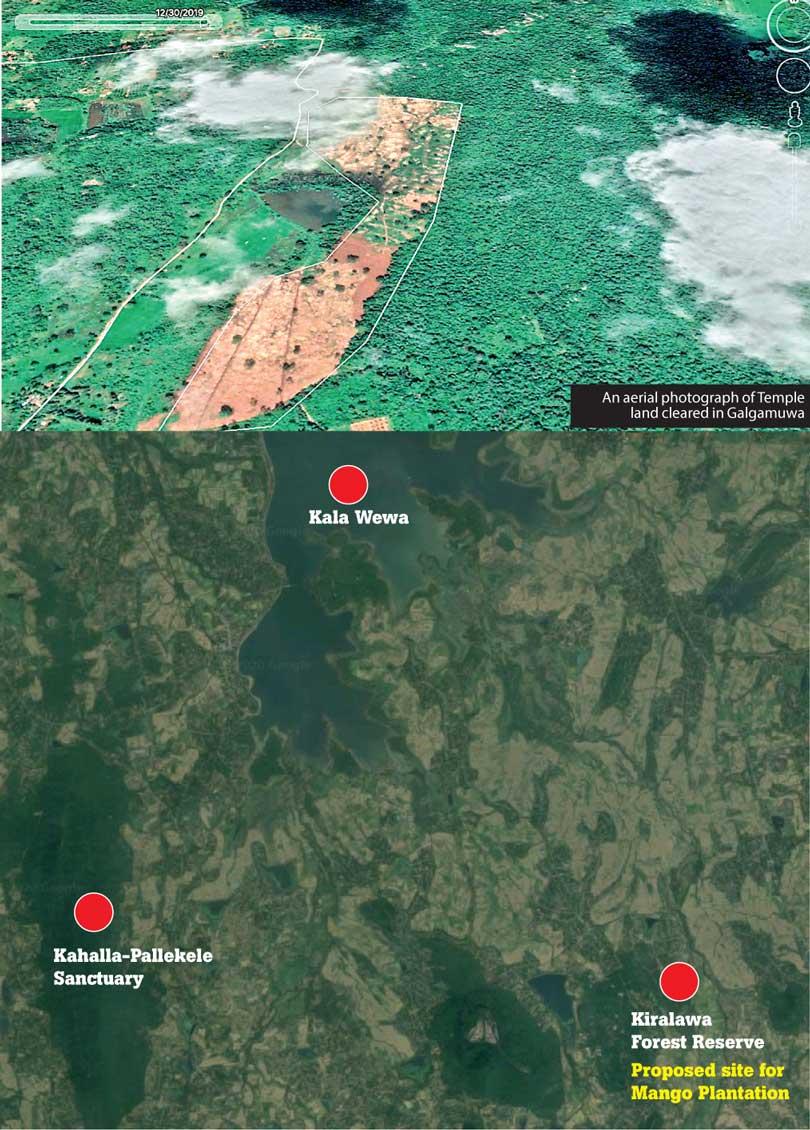
Situation in Wilpattu
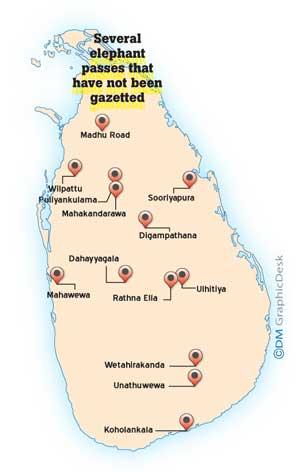 The Daily Mirror in an earlier instance exposed details about the ongoing aloe vera project in Rajanganaya Yaya 18 adjoining the Wilpattu buffer zone. According to environmentalists the tank that is being constructed is also along an elephant corridor. “They are clearing water from the Wilpattu catchment area and constructing the tank along an elephant corridor,” said Centre for Environment and Nature Studies convener Dr. Ravindra Kariyawasam. “The specialty of Wilpattu is that it consists of swamps. Swamp biodiversity helps to keep the biodiversity in tact during the rainy season. But some of these swamps have been destroyed now. One of the main arguments of those who say there is no problem in aloe vera cultivation is that the area where aloe vera is grown and the lake is not included in the buffer zone. But when we visited the area we used GPS technology to calculate the location of the tank, the aloe vera cultivation and eight locations were in the vicinity of the tank. Accordingly the places between the lake and aloe vera farm were located within a mile from the Wilpattu border,” said Kariyawasam.
The Daily Mirror in an earlier instance exposed details about the ongoing aloe vera project in Rajanganaya Yaya 18 adjoining the Wilpattu buffer zone. According to environmentalists the tank that is being constructed is also along an elephant corridor. “They are clearing water from the Wilpattu catchment area and constructing the tank along an elephant corridor,” said Centre for Environment and Nature Studies convener Dr. Ravindra Kariyawasam. “The specialty of Wilpattu is that it consists of swamps. Swamp biodiversity helps to keep the biodiversity in tact during the rainy season. But some of these swamps have been destroyed now. One of the main arguments of those who say there is no problem in aloe vera cultivation is that the area where aloe vera is grown and the lake is not included in the buffer zone. But when we visited the area we used GPS technology to calculate the location of the tank, the aloe vera cultivation and eight locations were in the vicinity of the tank. Accordingly the places between the lake and aloe vera farm were located within a mile from the Wilpattu border,” said Kariyawasam.
Avoid elephant corridors to avoid HEC
The highest number of human and elephant deaths has been recorded from the North Western Province. According to statistics by the Wildlife Conservation Department (DWC), from 2005–2012, as many as 226 humans and 556 elephants have died in this region as a result of HEC. These numbers could certainly be high today. One of the main reasons for the HEC to aggravate is due to the disruption of elephant habitats, habitat fragmentation and mass encroachments into their habitats. Constructions along frequently used migratory routes are another reason. According to Dr. Prithiviraj Fernando, wildlife conservationist and Chairman at Centre for Conservation and Research, Sri Lanka (CCRSL) these are areas elephants use within their home ranges. “Elephants tend to use the same route for movement and for that they use small forest patches to avoid coming into contact with humans. But with development elephants have no choice, but to move along the same areas and this is when the HEC takes place. As a result, even newly cultivated plots of land will be destroyed,” said Dr. Fernando.
He further said that although people believe that elephants travel along long distances it doesn’t happen in Sri Lanka.

Elephants tend to use the same route for movement and for that they use small forest patches to avoid coming into contact with humans
-Dr Prithiviraj
Little progress made in declaring elephant corridors
According to a 2018 Auditor General’s Report 16 elephant passes could not be gazetted. It further said that only the Kaudulla-Minneriya elephant pass could be published in the Gazette Extraordinary No. 1343/10 dated June 1, 2004. When inquired, DWC Director General M.G.C Sooriyabandara said that these areas were identified as elephant corridors after studying elephant behaviour. “We studied areas where HEC takes place and have also done a lot of radio collaring on elephants. Therefore these areas were identified as areas where elephants frequent and therefore proposed that they be declared as elephant corridors. We did put in a cabinet proposal and it received approval. But some of these areas come under the purview of the Forest Department. Some areas have human settlements and private investment projects. Hence, certain policy changes are required. So far we have studied nine of these areas and we only have to declare them,” said Sooriyabandara.
However he pointed out that it would take time depending on attitudinal and behavioural changes in people. “We haven’t asked them to declare that a particular stretch of land under DWC, but to leave it open as an elephant corridor. There’s progress at Wetahirakanda which comes under the purview of Forest Department. People in places like Ulhitiya in Mahiyanganaya have to be convinced and we are encountering certain challenges there. When people are moved out we have to pay them compensation. Between Gal Oya and Maduru Oya there’s a place called Puwakpele which comes under the purview of the Forest Department again. This area too has made huge progress and we will be able to declare it as an elephant corridor in the near future,” said Sooriyabandara.
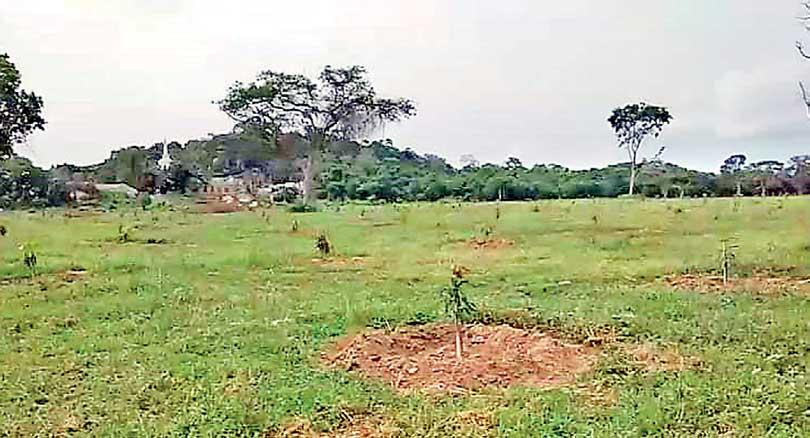
Mango plantation in the vicinity of the Temple
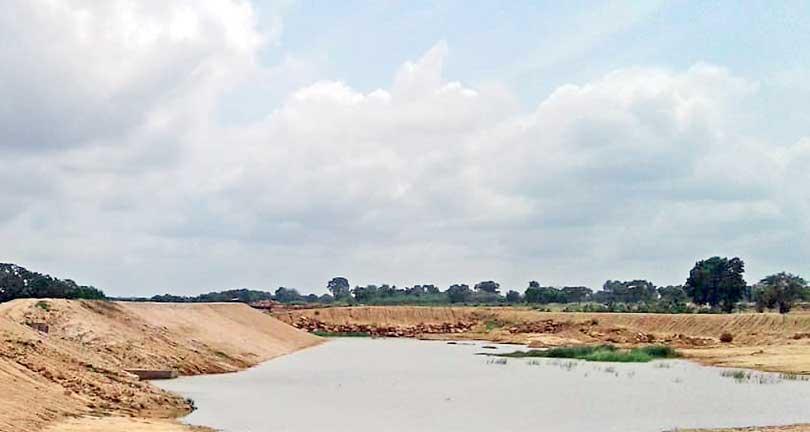
Lake constructed adjoining Wilpattu National Park buffer zone
Expert observations
According to research conducted by CCRSL elephants have well delineated to comparatively small home ranges of 50-150 sq. kilometres to which they show high fidelity. Such new information could be used to develop a better management and conservation plan taking into account the ecological and biological needs of the elephants. Few other findings are as follows :
One of the conclusions derived from these findings is that the current management of protected areas on a ‘hands-off’ basis makes them sub-optimal elephant habitat. Over the next few decades, through natural succession, habitats in many of the protected areas will become progressively less able to support high densities of elephants.